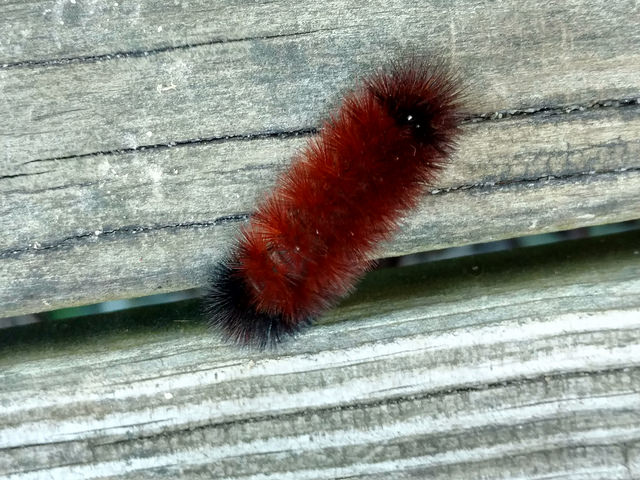In fact, the woolly bear caterpillar's coloring is based on several factors: how well the caterpillar has been feeding, its age, and its species. The larvae will shed their skins six times before reaching adult size, and their color changes with each successive molt. An early spring or wetter weather during the caterpillar’s development can mean more food resources, quicker growth, and thus more change in coloration.
Additionally, of the approximately 260 different species of tiger moth in North America, each has a slightly different color pattern--some entirely black, and some with little to no black at all.
So it would seem that woolly bears might be better at recapping the season behind us than predicting the weather ahead! But whether they’re useful forecasters or not, we can help woolly bears by providing good habitat. As generalists, tiger moths aren't fussy, but important larval host plants include deciduous trees and herbaceous plants such as asters and sunflowers.
We can also provide plenty of winter shelter in our landscapes, such as leaf litter and fallen logs.
Author: Lisa Schneider
Photo: Wayne Longbottom


 RSS Feed
RSS Feed